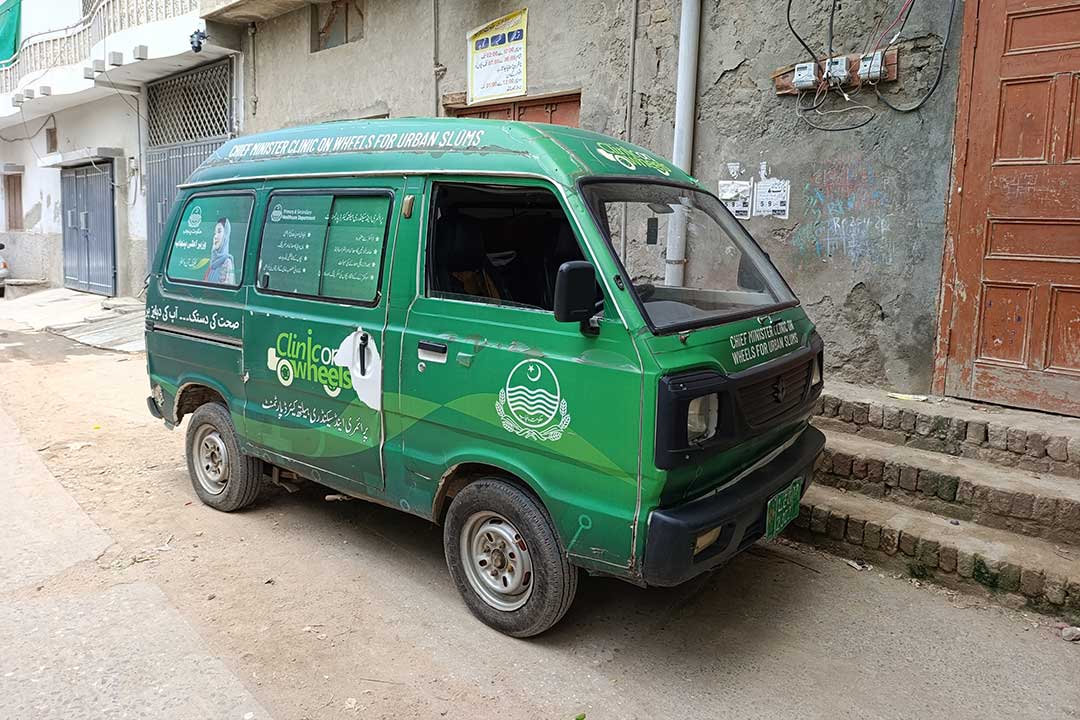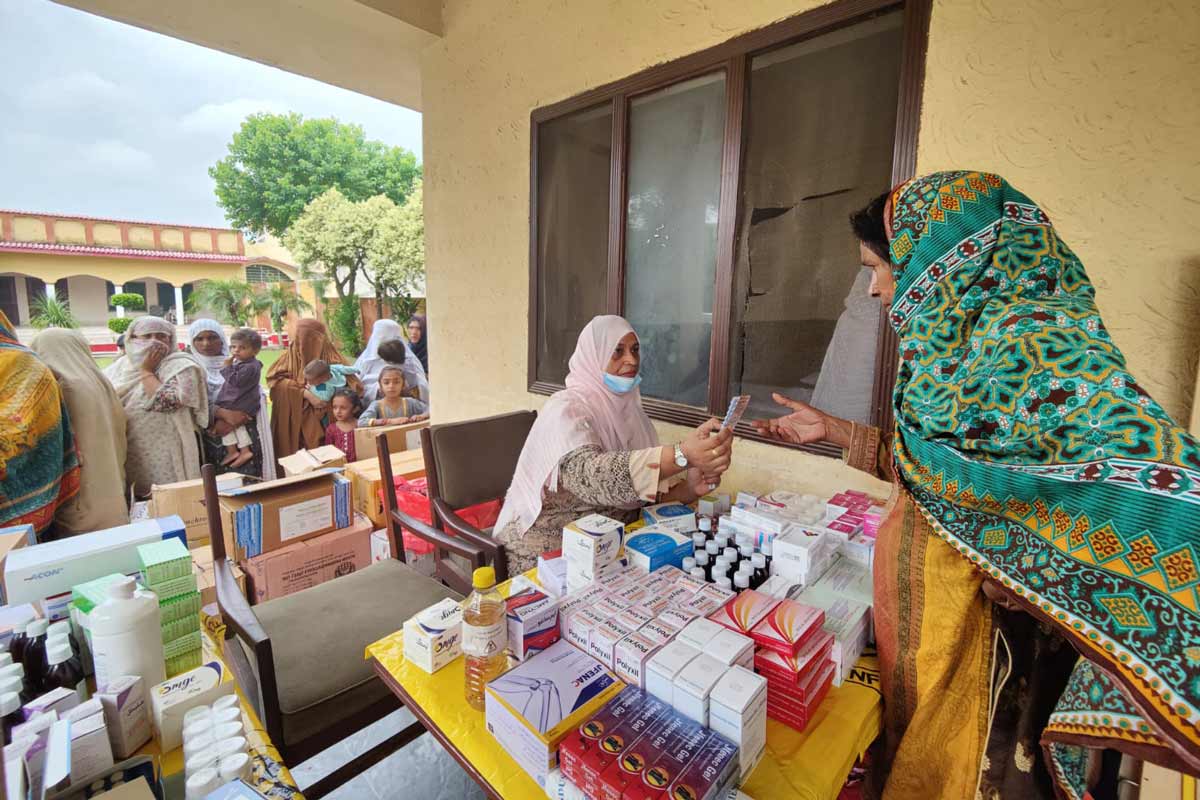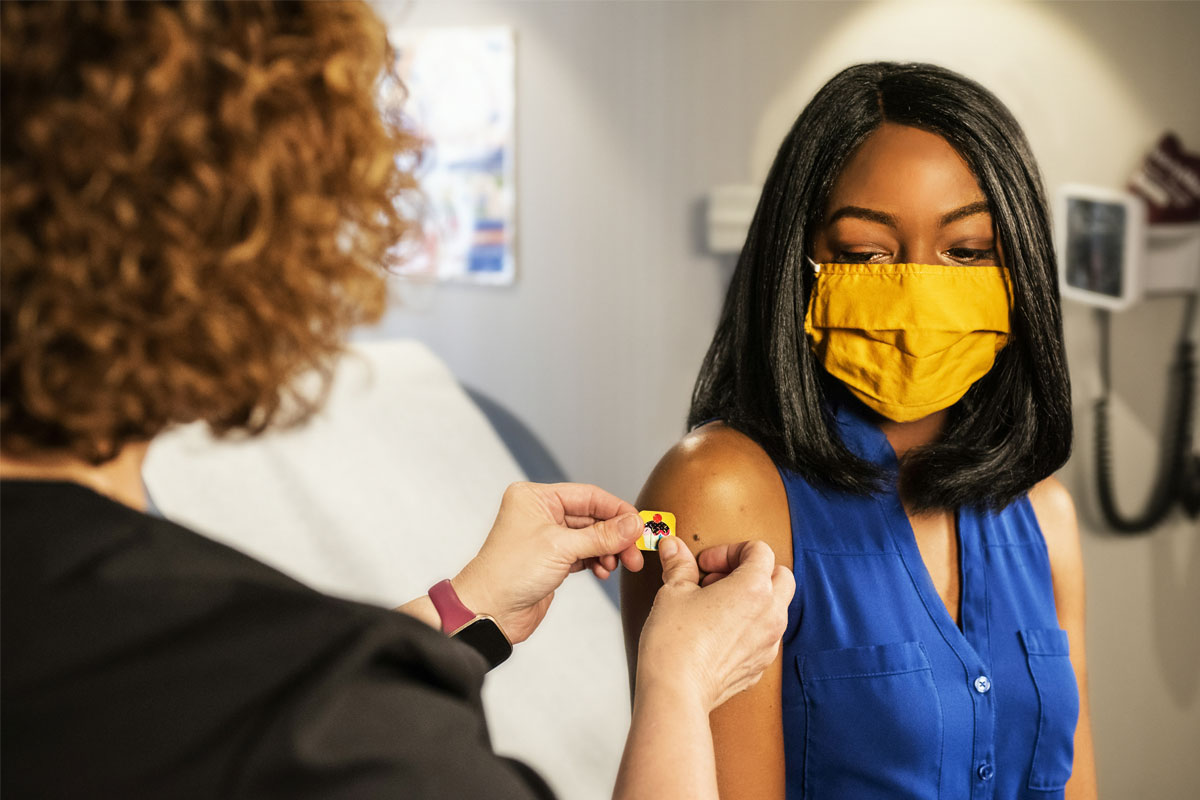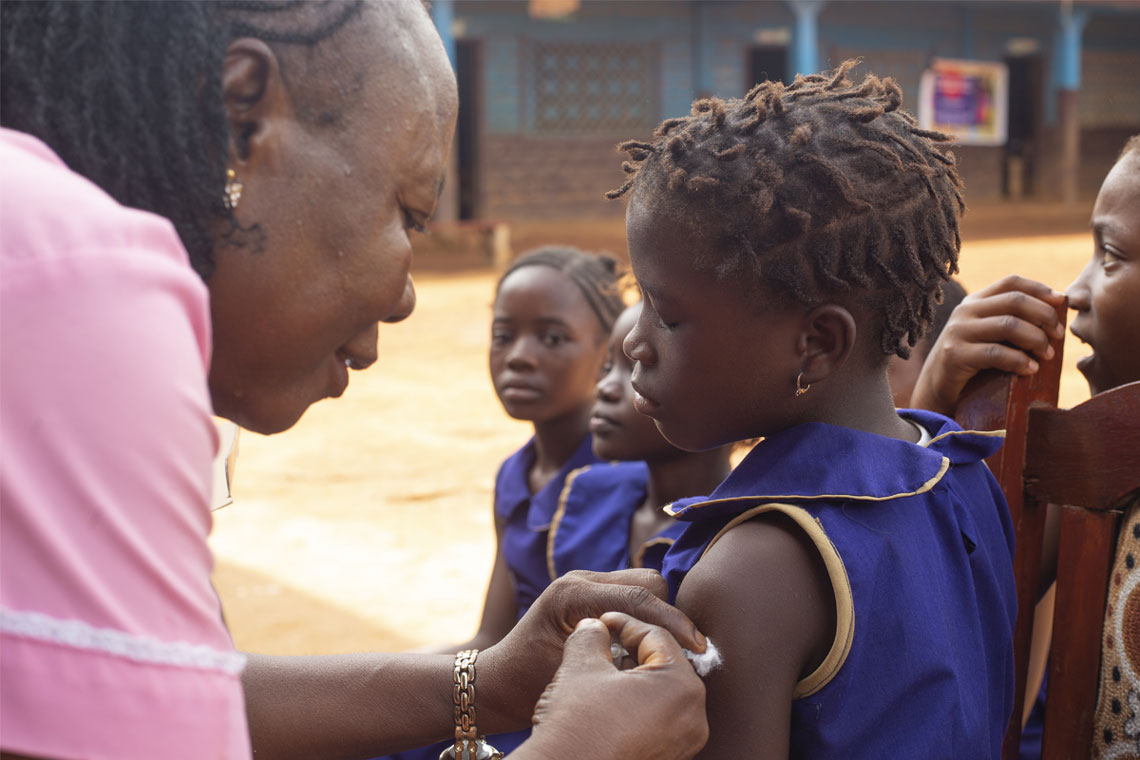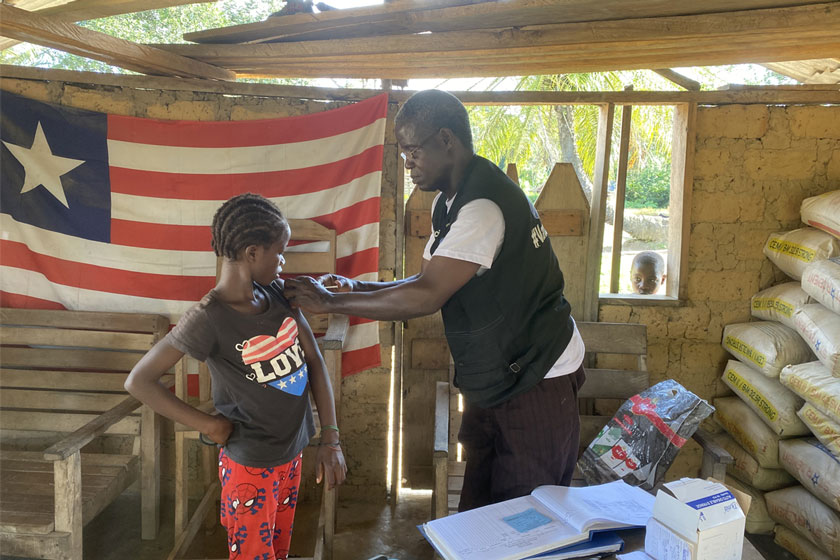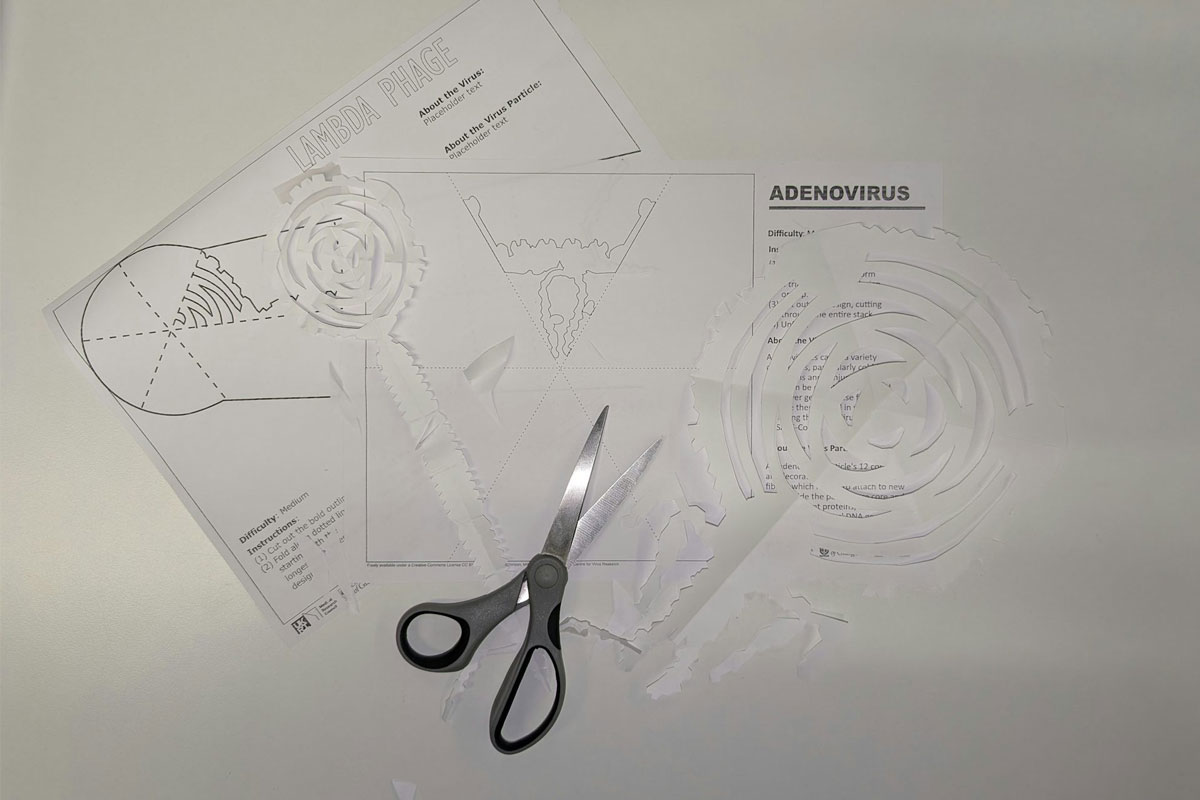“I want to keep my child safe”: Pakistan’s sprint to reach unimmunised minority
In Lahore, a targeted initiative to reach zero-dose kids has shown what joint commitment of public health leaders and the community can achieve.
- 6 December 2024
- 6 min read
- by Rahul Basharat Rajput , Gavi Staff
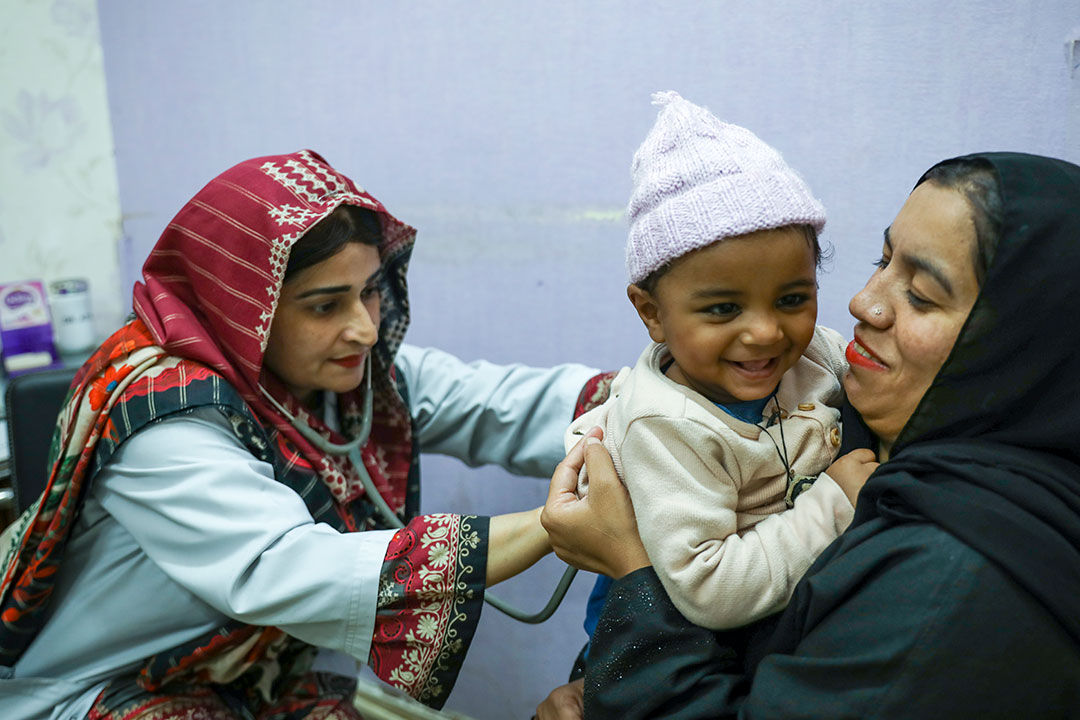
The basic health unit of Bhangali, on the outskirts of Pakistan’s bustling Lahore, was packed with parents holding children. It was the monsoon season, but the anticipated downpour hadn’t broken, so the air was humid, and the people in the immunisation clinic’s anteroom were damp with sweat.
Following a thorough mapping phase, vaccinators were deployed to these harder-to-reach urban pockets with a simple, but ambitious, target: discover and protect all the under-immunised and unimmunised children that there were.
Twentieth in the queue, and expecting a wait of 45 minutes, Rubina Aslam, aged 28, held her 6-month-old daughter Sameena on her lap. To kill time, the young mother repeatedly read through the vaccination card in her hand, idly matching what she learned there against the vaccination schedule displayed on the wall.
Neither the unpleasant weather nor the delay had been able to dissuade her from the urgency of this visit, she told VaccinesWork. “Polio, hepatitis, measles, tetanus, diphtheria – these are all serious diseases and I would never want to contract them to Sameena, my daughter,” Aslam said.
Adjusting her daughter’s sleeve as if to prepare for the upcoming shot, she said she had recently seen a television broadcast on rising measles and polio cases, which had strengthened her resolve to keep her child up to date on her vaccines. “I want to keep my child safe,” she said.
Squeezing shut the gaps
Pakistan, home to 241 million people, is striving to close its childhood immunisation gap, and the last decade and a half has seen the country make heartening strides.
In 2010, as many as 2.1 million children in the country qualified as ‘zero-dose,’ meaning they had not been reached with even the first instalment of the basic diphtheria, tetanus and pertussis vaccine (DTP1). By 2019, that figure was down to just 639,000, but the COVID-19 pandemic then landed an upset. With routine immunisation activities suspended and disrupted, the number of unprotected zero-dose kids leapt to more than 800,000 in the space of just one year. Progress had officially stalled; a determined game of catch-up – hobbled by 2022’s disastrous flooding – followed.
By end 2023, however, Pakistan appeared to be back on track, with the latest annual UNICEF/World Health Organization immunisation tallies recording a zero-dose figure of 396,000.
Moreover, while in 2013, none of the nine vaccines then included in the national immunisation schedule achieved coverage of 90% or more, in 2023,3 out of 14 vaccines in the schedule have achieved coverage of 90% or more, meaning that forward motion was measurable on more than one axis.
Progress of that scale makes Pakistan something of a stand-out case in a difficult era: global childhood immunisation coverage statistics remained static in 2023.
Case study: in Lahore, a strategic sprint…
How has Pakistan done it? Health leaders suggest that the case of Lahore district – the urban heart of Pakistan’s most populous province, Punjab – might offer insights into the forces behind Pakistan’s impressive bounceback.
In the space of a few months earlier this year, Lahore conducted what Expanded Programme on Immunization (EPI) Punjab director Dr Mukhtar Ahmed described as “a targeted intervention” aimed at improving service delivery in slum zones. Following a thorough mapping phase, vaccinators were deployed to these harder-to-reach urban pockets with a simple, but ambitious, target: discover and protect all the under-immunised and unimmunised children that there were.
Have you read?
“This focussed approach resulted in a significant increase in immunisation rates in Lahore district, rising from 69% to 85% within a few months,” said Dr Ahmed.
It helped, said Dr Ahmed, that “Clinics on Wheels” became available to deploy. These are mobile health service units championed by the Chief Minister of the province, Maryam Nawaz, which were able to be positioned strategically to boost health system reach exactly where most needed.
Specialists from the development consultancy Acasus, which is helping Pakistan to find and protect its unvaccinated children, say that the momentum towards higher vaccination coverage rates across the province has relied on a solid collaboration between the EPI, the National Polio Emergency Program, district-level administration and the communities themselves. “The cooperation level from community was high [while] access to the communities was made possible by the administration,” said team Acasus, noting that some 600,000 at-risk children were reached during the Lahore push.
What does that collaboration look like in practice? A lot of the time, it looks like information bouncing efficiently, describes Dr Ahmed. When Polio teams find under-immunised or unimmunised children, that information is relayed directly to the Information Systems wing of the health department, which directs it as actionable data to the relevant frontline workers. “That ensures that vaccinators can effectively track and reach these children during routine community visits,” he says.
In urban spaces, after all, “hard-to-reach” communities are less often physically remote than socially marginalised – at risk, that is, of slipping through the cracks of health system oversight. A tight collaboration between diverse actors in the allegiance functionally creates a denser mesh of public care.
The tech helps, too. Acasus experts emphasised that the vaccinator teams visiting communities in both urban and rural areas across the province were equipped with digital tools to rapidly identify and reliably record the number of zero-dose children being covered during the campaigns.
…as Punjab province invests in infrastructure
Dr Ahmed now says EPI Punjab has set its targets on improving immunisation rates across the province from the 89% baseline recorded during a 2023 third-party survey.
According to the Punjab’s health department’s data the provincial EPI recorded 33% increase in coverage of “fully immunised children” – a metric used in Pakistan but not tracked by the annual UNICEF/WHO immunisation coverage data – in the last 12 years.
In the last couple of years, the determined effort to push progress further still has precipitated the institution of a few new measures.
To cover the human resource gap for vaccination campaigns, for instance, 2,000 regular posts of vaccinators were created, and more than 1,300 new vaccinators were inducted.
Infrastructure has also won investment: EPI centres were improved, and the cold chain has been expanded. According to provincial data 260 new EPI centres were opened in Punjab while 297 were refurbished with the support of partners including WHO and UNICEF. Thirteen new EPI clinics were also established in the cities of Lahore and Rawalpindi.
Further to go
Although coverage with the first dose of the basic DTP vaccine is five percentage points higher, in Pakistan, at 94%, than the global rate, there’s still further to go.
Former federal minister for health and WHO Director for Health Systems Dr Zafar Mirza says, “The immunisation of children living in poverty still needs more attention because poverty and health are quite linked with each other.”
Dr Mirza also underscored that regional disparities need to be considered. Where Punjab has the highest coverage percentage, some areas, such as parts of Balochistan, lag way behind.
“We need to target such communities with more financing and responsibility to end this disparity,” he said.

